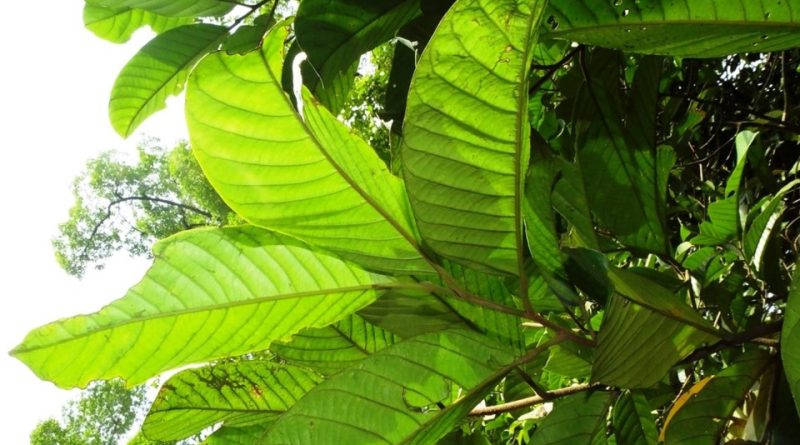Alangium ridleyi
Alangium ridleyi
Ridley’s Alangio (Alangium ridleyi King, 1902) is an arboreal species belonging to the Cornaceae family.
Systematics –
From a systematic point of view it belongs to:
Eukaryota domain,
Kingdom Plantae,
Subkingdom Tracheobionta,
Spermatophyta superdivision,
Magnoliophyta division,
Class Magnoliopsida,
Subclass Rosidae,
Cornales Order,
Cornaceae family,
Genus Alangium,
Species A. ridleyi.
The terms are synonymous:
– Alangium costatum Wangerin;
– Marlea costata Valeton.
Etymology –
The term Alangium of the genus is a Latinization, derived from the Malayalam name alangi, which, in Kerala, refers to the plant Alangium salviifolium. The term was named in 1783 by Jean-Baptiste Lamarck in his Encyclopédie Méthodique.
The specific epithet ridleyi is in honor of the British botanist Henry Nicholas Ridley, who contributed significantly to the knowledge and description of the flora of south-east Asia, including Alangium ridleyi.
Geographic Distribution and Habitat –
Alangium ridleyi is a plant native to Cambodia, Laos, Peninsular Malaysia, Singapore, Sumatra, Thailand and Vietnam.
In these countries, its habitat is that of swampy dipterocarp mixed forests, often as the dominant species, where it grows along rivers, on slopes and ridges, up to 350 m of altitude.
Description –
Alangium ridleyi is an evergreen tree that grows up to about 35 m.
The trunk can reach 50 cm in diameter and has a dark gray bark.
The leaves are 10-40 cm long and 5-15 cm broad; they are arranged in a spiral, simple, elliptical with a pointed apex and entire margin, glabrous, of an intense green colour; the petiole is 2-4 cm long;
the inflorescences are produced in sessile axillary cymes; bear 3-10 flowers 1.5-2.5 cm long and about 2.5 cm in diameter; the flowers are white with a bell-shaped calyx and a corolla with 6 fleshy oblong-lanceolate petals, retroflexed, pubescent internally.
The fruit is an ovoid drupe with 10-14 longitudinal reliefs, 3-3,7 cm long and about 2 cm of diameter, of a purple red colour.
Inside you will find a seed with an edible aril.
Cultivation –
Alangium ridleyi is a tropical plant native to Southeast Asia.
Its cultivation requires tropical and subtropical climates, with average temperatures ranging between 20°C and 30°C. The plant requires good exposure to direct sunlight.
The plant prefers well-drained, fertile soils. During the active growing season, it needs sufficient and regular water sources.
The multiplication can take place by seeds or cuttings. Seeds require cold stratification before sowing, while cuttings can be taken from mature plants and rooted in a suitable substrate.
Customs and Traditions –
Alangium ridleyi is a plant known in the territories where it grows naturally under various names: lajik kuning; medong (Borneo); boiko (Indonesia); babi kurus, mentulang daun lebat (Singapore); cây quăng, nang (Vietnam).
It is a little known plant outside its area of origin.
The plant mostly grows spontaneously, however being cultivated in some areas.
It is a plant with a habit suitable for use as an ornamental species in suitable climates. It can in fact be cultivated in tropical climates with well drained but humid soils, rich in organic substance, from acids to neutral.
The wood of this plant is white in color but is rarely used by local populations despite having good characteristics of hardness and resistance.
Surely it was used as firewood or charcoal.
It is a plant whose fruits may have been eaten by local populations but there is little data available.
Method of Preparation –
Alangium ridleyi is a little-known plant outside its natural range
This plant can have food uses and for the use of wood, however it seems to be little used and the available data are insufficient.
Guido Bissanti
Sources
– Acta Plantarum – Flora of the Italian Regions.
– Wikipedia, the free encyclopedia.
– GBIF, the Global Biodiversity Information Facility.
– Useful Tropical Plants Database.
– Conti F., Abbate G., Alessandrini A., Blasi C. (ed.), 2005. An annotated checklist of the Italian vascular flora, Palombi Editore.
– Pignatti S., 1982. Flora of Italy, Edagricole, Bologna.
– Treben M., 2000. Health from the Lord’s Pharmacy, Advice and experiences with medicinal herbs, Ennsthaler Editore.
Photo source:
– http://mediaphoto.mnhn.fr/media/1441407881186kyIFBupXEiVYcp54
Attention: The pharmaceutical applications and alimurgical uses are indicated for informational purposes only, they do not in any way represent a medical prescription; we therefore decline all responsibility for their use for curative, aesthetic or food purposes.


